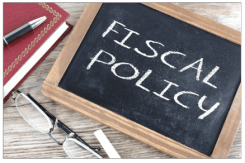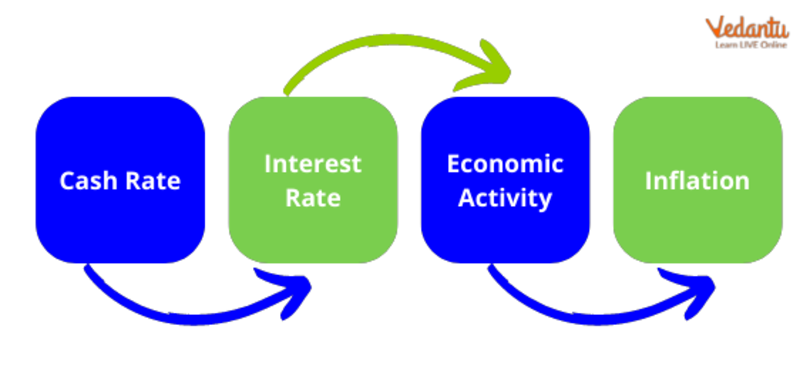




Role of Government in Economy
Government Economics introduces you to the field of government and economics, a new area aimed at better understanding the role and behaviour of governments in the economy. Government intervention in the economy is inevitable as certain roles and responsibilities cannot be assumed by the private sector. Governments are meant to guide and direct the pace of economic activity in the country. It also needs to ensure stable growth, high employment, and price stability. Additionally, governments need to adjust tax rates and spending so that economic growth can either accelerate or slow down.
The government's invisible hand in the economy becomes apparent when governments intervene to correct identified deficiencies in market mechanisms. Governments keep private companies out by owning and operating certain companies, such as the military. The impact of government policies on business is positive on the note that it regulates businesses such as telephone companies, imposes taxes on citizens, and distributes profits to citizens. The role of government in the economy also includes the use of fiscal and monetary power to promote economic growth and development to adjust business cycles as needed also comes under the role of government.
Fiscal Functions of Government
Modern economists believe that government has three fiscal functions:
Allocation Function
Distribution Function
Stabilisation Function
Allocation Function: In a market economy, the allocation of production resources is generally made by the market mechanism to the price mechanism, which is not always optimal. Governments use their fiscal policies to optimise the desired allocation of productive resources or the allocation among different products. A pricing mechanism is a system in which the allocation of resources among various goods and services is based on relative market prices. Market mechanisms generally fail to achieve the desired results. Governments must intervene in the market through fiscal policy to achieve desired production, consumption, and distribution levels. Governments use tax policies, subsidy programs, regulations, restrictions, and licensing policies to achieve desired results. Through policies, the government allocates the resources necessary for the proper development of the economy.
Distributive Function: Due to monopoly inheritance laws, the market and price mechanisms cannot equitably distribute wealth and income. Because the welfare state is responsible for reducing economic inequality, the government seeks to reduce large economic inequalities through taxation. It uses progressive taxation, subsidies, transfer payments, public distribution systems, and many welfare programs for the poor to reduce economic and wealth inequality.
Stabilising Function: The nature of the market economy creates trading and price cycles. These cycles make the economy unstable and uncomfortable. Therefore, the government must reduce economic instability and stabilise the economy more and more. Governments use tax policies, fee policies, spending policies, fiscal deficits, public borrowing, etc. to control economic fluctuations in the economy.
Economic Policies
To ensure strong economic growth, there are two main economic policies through which the government may respond to economic activity.
Fiscal Policy
Monetary Policy

Fiscal Policy
Fiscal policy
Governments can also issue policies to adjust spending, change tax rates, or introduce tax incentives. When it comes to government budgets, governments decide whether to spend more than they plan to raise. This process of assessing public spending aims to promote economic prosperity or cool an overheated economy. Instead of focusing on how the government spends money, general fiscal policy is about how the government raises money. Offering tax incentives, additional tax credits, or tax relief relieves the financial burden on citizens and promotes economic growth. Repeal of favourable tax laws and tax increases slow down economic activity.
Monetary Policy
One of the most common ways governments influence a country's economic activity is by adjusting borrowing costs. Most often, this is done by lowering or raising the Federal Funds Rate, the target interest rate that affects short-term interest rates on debt such as consumer loans and credit cards. The Federal Reserve raises the federal funds rate to curb economic growth and lowers the federal funds rate to boost economic growth. Another form of monetary policy is the buying and selling of government securities by the Federal Reserve. When the Federal Reserve buys securities from a bank, it injects money into that bank to increase the money supply. Alternatively, you can sell your stocks to eliminate cash and reduce the money supply.

Monetary Policy
Impact of Government Policies on Business
The government sets many policies that guide businesses. The impact of government policies on business is highlighted below:
Governments can make tax policy changes that lead to changes in taxes, trade, subsidies, regulations, interest rates, licences, etc. Organisations must be flexible enough to accommodate changing rules and policies.
Government policies can affect the taxes communities pay, pensions, immigration status and laws, penalties for breaking the rules, the education system, trade and commerce in the economy.
Governments implement policies that change social behaviour in the business environment. Governments can make agreements to develop new technologies that bring about the necessary changes.
Declining private investment reduces the production of goods and services. This, in turn, could lead to job cuts. Government policies can affect interest rates, and higher interest rates increase borrowing costs.
Case Study
State the main objectives of Fiscal policy in India.
Ans: Fiscal policy in India is the driving force that helps determine how much money the government spends to support economic activity and how much income it collects from the system to keep the wheels of the economy spinning. In recent years, the importance of fiscal policy has increased to realise rapid economic growth in India and worldwide. The objectives are listed below:
Achieving rapid economic growth is one of the key fiscal policy objectives the Government of India set. Fiscal policy, along with monetary policy, plays an important role in managing a country's economy.
A country's government steers the economy through fiscal policy by controlling the flow of tax revenue and public spending. A government is in surplus if it receives more income than it spends and a deficit if it spends more than tax and non-tax income.
Summary
The government's invisible hand in the economy becomes apparent when governments intervene to correct identified deficiencies in market mechanisms. Governments keep private companies out by owning and operating certain companies, such as the military. Governments can influence the economy's performance through combined monetary and fiscal policies. Monetary policy refers to central banks' actions to influence the amount of money and credit in the economy. In contrast, fiscal policy refers to government decisions regarding taxes and spending. These two policy areas affect the economy through different mechanisms.
FAQs on The Role of Government in the Economy
1. State the difference between monetary and fiscal policies.
The policy that determines how much the government spends and what taxes citizens have to pay is called fiscal policy. Both help the government actively monitor and influence the country's economy. Governments use fiscal policy to contain recession and unemployment or to keep inflation in check. Most often, fiscal policy is used in conjunction with monetary policy. Monetary policy involves the use of interest rates and changes in the money supply to achieve relevant economic goals. The main objective of monetary policy is to keep inflation low and stable. But banks are also trying to support stability in economic growth.
2. Explain the federal reserve system.
The Federal Reserve directs the country's monetary policy. It was established by Congress in 1913 to control the money supply and actively use policies to respond to and influence economic conditions. The Federal Reserve adjusts the interest rates banks charge for lending money to each other. The Federal Reserve is determined to keep borrowing cheap by cutting interest rates, making credit more widely available, and boosting consumer and business confidence. Conversely, the Fed may decide to raise rates when the economy is doing well or in response to inflation concerns.
3. What are the three tools of fiscal policy?
The tools of fiscal policy are as follows:
Government Spending: Adjusting government spending can affect economic output. Government expenditure includes the purchase of goods and services for the benefit of the community and can be classified as government consumption expenditure. Government spending on research activities and infrastructure intended to generate future profits is classified as Gross Government Investment.
Transfer Payments: Used to describe government payments made to individuals through welfare programs, college grants, and social security.
Taxes are a fiscal policy tool because taxes affect average consumer income, and changes in consumption lead to changes in real GDP. Therefore, by adjusting taxes, states can influence economic performance. Taxes can be changed in several ways.





















